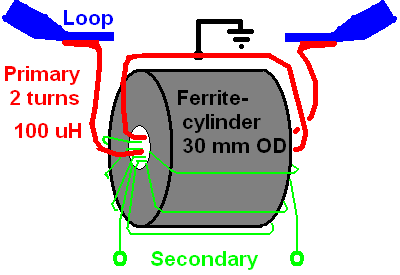


, The : Seemaintain voltage across gyrator substantially constant. We extract the time variation of the electron density profile in the D-region of the ionosphere due to occulted solar flare from the combined effect of the eclipse and the flare. : Seenoise, heterodyne VLF receiver system. By superposing the lunar disk on the image obtained by HINODE mission, we pin-point the time frame of blocking hard and soft X-rays. In some days, the terminator times from the loop antenna was used for the calibration. The latter antenna is a single loop type. Most interestingly, there was also a flaring activity in the sun which reached its peak (C-type) just after the time when the eclipse was near maximum. up, we also use our Gyrator-II type receiver capable of tun-ing in to a single transmitter.

We got a clear depression in the data during the period of the partial eclipse. 2: Gyrator-based variable L for receiver tuning Principles of Parallel-Compensated RIC-WPT Receiver In parallel-compensated RIC-WPT receivers, a capacitor is connected in parallel with the receiver coil to enable the receiver to resonate precisely to the transmitter frequency f T. We compare the data from GOES-14, HINODE and RHESSI satellites during the event. 1: Simplified model for WPT parallel receiver Fig. The deviation of the signal from the normal value was obtained by subtracting from the average diurnal signal on days bracketing the eclipse. The transmission range and efficiency of wireless power transfer have been. Magnetic resonance wireless power transfer (WPT) is a very promising technology for a wide range of applications. The annular solar eclipse of Janustarted at 12:05 IST (UT+5:30) and continued up to 15:28 IST. Thus the resultant signal was perturbed both by the eclipse and by the flare. The detuning effect of parallel compensated receivers is discussed, and thereof a novel self-tuning method and related circuit topology and control is proposed and characterized in the system application. The Indian Centre for Space Physics (ICSP) made Gyrator-III VLF receiver (122 kHz) with a loop antenna was monitoring NWC station from Khukurdaha. During the same period, a solar flare also occurred and it was partly blocked by the lunar disk. I stopped by the Far Circuits booth and bought a board for the Stokes gyrator tuned VLF receiver for monitoring Sudden Ionospheric Disturbances (SIDS) and a board for the RS-4 receiver. The receiver and the transmitter were on two opposite sides of the annular eclipse belt. A ground based Very Low Frequency (VLF) radio receiver of Indian Centre for Space Physics located at Khukurdaha ( 22 ° 27 ′ N, 87 ° 45 ′ E ) monitored the VLF signal at 19.8 kHz from the NWC station during a partial solar eclipse (maximum obscuration 75%) which took place on January 15, 2010.


 0 kommentar(er)
0 kommentar(er)
